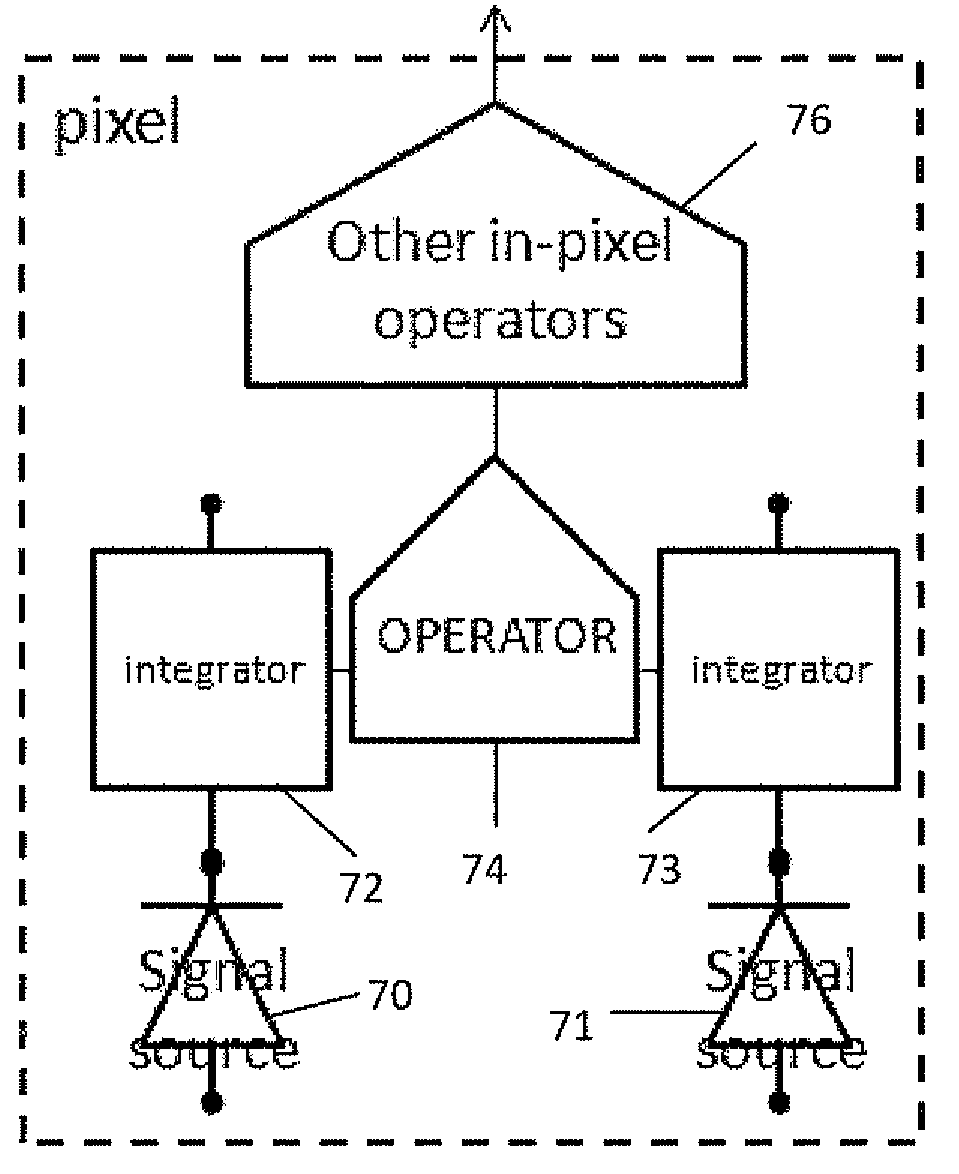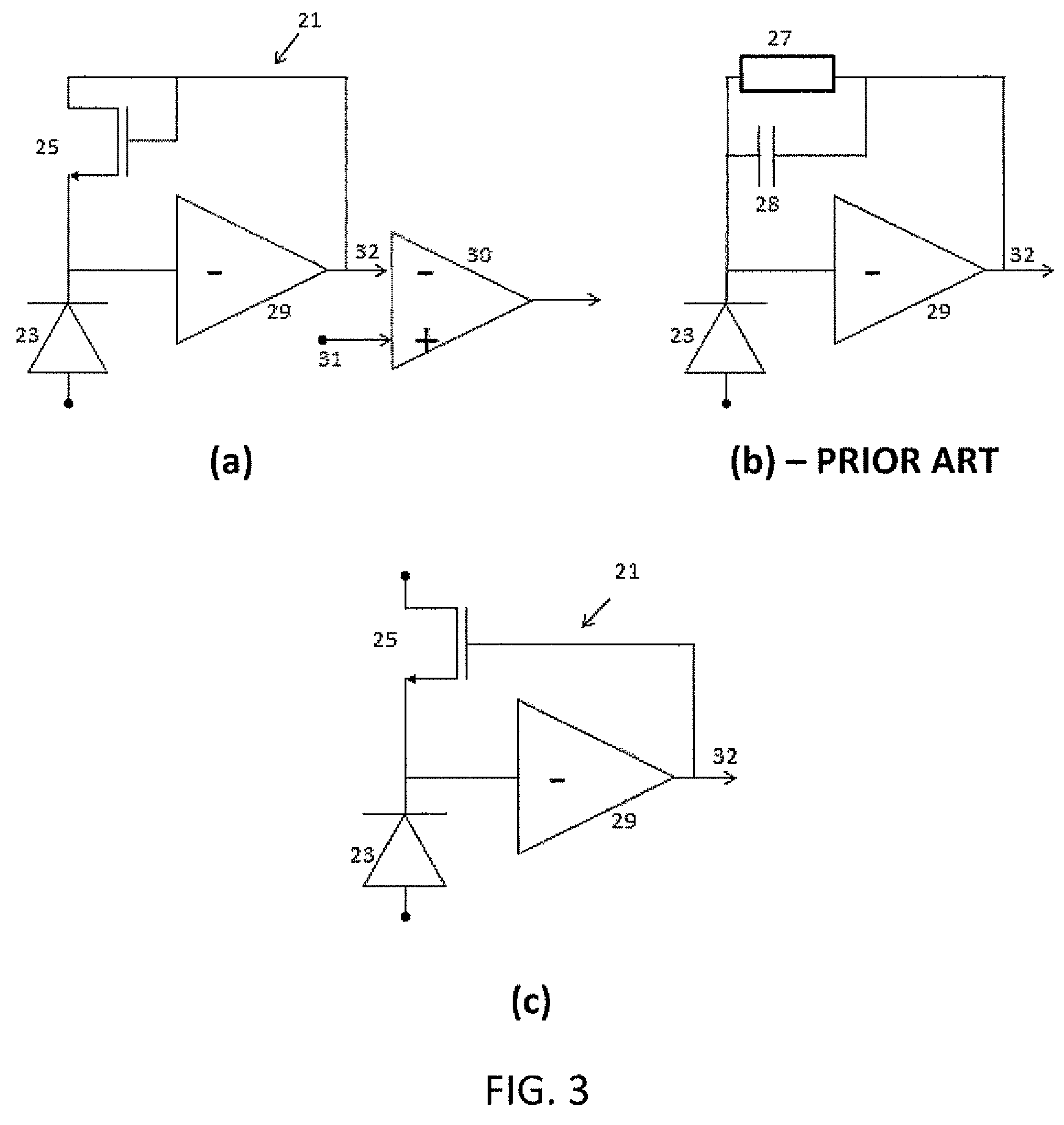Combined integration and pulse detection
a pulse detection and integrated technology, applied in the field of image sensing, can solve problems such as complex devices for counting pixels
- Summary
- Abstract
- Description
- Claims
- Application Information
AI Technical Summary
Benefits of technology
Problems solved by technology
Method used
Image
Examples
first embodiment
[0069]A general pixel 20 according to the present invention is illustrated in FIG. 2. A pixel 20 is illustrated, with one pulse detector, for example implemented as a pulse shaper circuit 21, and one integrator 22, both acting upon and in series with a same signal current emanating from a radiation transducer or charge input, represented here as a (photo)diode 23. Not illustrated in FIG. 2 are further pixel circuit elements as buffers, multiplexers, accumulators, etc. The pixel 20 has two output ports, for each delivering an output signal: a pulse shaper output signal 40 and a charge integration output signal 41.
The Pulse Detection Circuit
[0070]With the pixel comprising “at least one pulse detection circuit” is meant that the pixel has a provision to create a transient electrical pulse to indicate the passage or detection of a particle, photon, charge packet etc.
[0071]Such pulse detection circuit may typically be performed in a so-called pulse shaper circuit 21, which shapes packets...
second embodiment
[0082]A pixel according to the present invention is diagrammatically illustrated in FIG. 5. The signal from a radiation detector 50 passes first through an integrator 52 and then through a pulse detector 51 coupled in series. The pulse detector 51 and the integrator 52 are directly connected to one another, i.e. no switch or other circuitry is provided in between. Again, pulse detection and integration is performed substantially simultaneously, and on the same sensing signal emanating from the radiation detector 50.
third embodiment
[0083]A pixel according to the present invention is diagrammatically illustrated in FIG. 6. The signal from the radiation detector 50 or particle detector goes through a pulse detector 51 to an integrator 52, but the amount of the signal that goes to this integrator 52 is modulated (turned on or off) by a circuit (switch 53) that is driven by the pulse detector output. Hence, in the embodiment illustrated, a switch 53 is provided between the pulse detector 51 and the integrator 52. The output signal of the pulse detector 51 will be used to determine whether or not the integrator 52 will integrate the sensing signal. When the switch 53 is closed, pulse detection and integration is performed on the same sensing signal emanating from the radiation detector 50.
PUM
 Login to View More
Login to View More Abstract
Description
Claims
Application Information
 Login to View More
Login to View More - R&D
- Intellectual Property
- Life Sciences
- Materials
- Tech Scout
- Unparalleled Data Quality
- Higher Quality Content
- 60% Fewer Hallucinations
Browse by: Latest US Patents, China's latest patents, Technical Efficacy Thesaurus, Application Domain, Technology Topic, Popular Technical Reports.
© 2025 PatSnap. All rights reserved.Legal|Privacy policy|Modern Slavery Act Transparency Statement|Sitemap|About US| Contact US: help@patsnap.com



